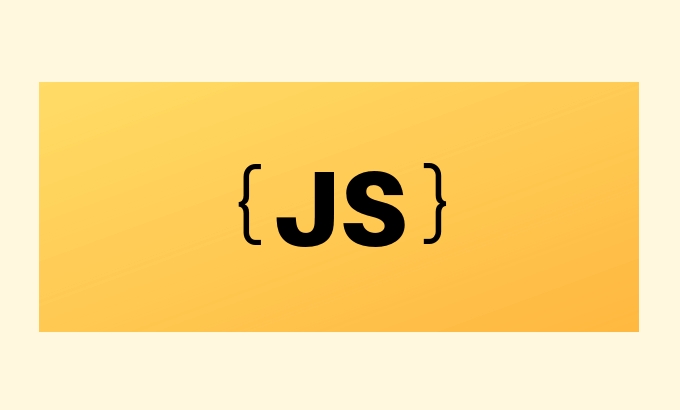JavaScript uses automatic garbage collection (GC) mechanism to manage memory without manual cleaning. Its core is to judge whether the object survives through "reachability". The mainstream methods include marking-clearing and generational recycling. The V8 engine divides objects into the new generation and the old generation, and uses Scavenge, mark-clearing and mark-organization algorithms to improve efficiency. Developers can detect memory leaks through tools, and should avoid problems such as global variable abuse, unbound event listeners and circular references. Using weak reference structures such as WeakMap or WeakSet can also help reduce the risk of memory leaks.

JavaScript does not require you to clean up memory manually, but it has a set of automatic garbage collection (GC) mechanism behind it that works silently. The core task of this mechanism is to identify which memory is no longer used and automatically release them.

The basic principles of garbage collection
JavaScript's garbage collection mainly relies on the concept of "reachability". Simply put, if an object can be accessed from a root object (such as the global object window or global) through a reference chain, it is considered "survivable"; otherwise, if it cannot be accessed, it will be marked as garbage and wait for recycling.

There are two common implementation methods:
- Mark-and-Sweep : This is the most mainstream way. GC will traverse all referenced objects from the root and mark them, and unmarked objects will be treated as garbage.
- Reference Counting : Each object maintains a reference count, which is recycled when the reference number is zero. However, due to the problem of circular reference, most modern JS engines have deprecated this method.
Garbage collection strategy in V8 engine
If you are using Chrome or Node.js, your code runs in the V8 engine. V8 uses a generational garbage collection strategy to divide the object into two areas:

- Young Generation : Store objects with short life cycles, high recycling frequency and fast speed.
- Old Generation : Stores objects that have been recycled multiple times, and the recycling frequency is low but it consumes more resources.
V8 uses the Scavenge algorithm to process the new generation, while the old generation uses a combination of mark-clearing and mark-tissueing for recycling.
You can observe memory changes through the Memory panel of Chrome DevTools, or you can use the --inspect parameter to analyze memory leak problems in Node.js.
How to avoid memory leaks
Although JavaScript automatically manages memory, improper writing can still lead to memory leaks. Common reasons include:
- Avoid global variables inadvertently retaining large amounts of data
- Pay attention to the removal of event listeners and timers
- Use weak reference structures such as
WeakMapandWeakSet
For example, if you bind an event handler to a DOM element and do not unbind when the element is removed, the function and its referenced data may not be recycled.
let element = document.getElementById('myButton');
element.addEventListener('click', () => {
console.log('Clicked!');
});The above code itself is fine, but if you manually remove this button element and do not unbind it, it may lead to memory leaks. The correct way to do it is:
element.removeEventListener('click', handler);
Or use WeakMap to save the data associated with the DOM, so that when the DOM is removed, the relevant data will be automatically recycled.
Basically that's it. Understanding the garbage collection mechanism can help write more efficient code and can also help troubleshoot performance issues. Although you don't need to worry about memory most of the time, understanding how it works can save you a lot of trouble at critical moments.
The above is the detailed content of How Javascript Performs Garbage Collection. For more information, please follow other related articles on the PHP Chinese website!

Hot AI Tools

Undress AI Tool
Undress images for free

Undresser.AI Undress
AI-powered app for creating realistic nude photos

AI Clothes Remover
Online AI tool for removing clothes from photos.

Clothoff.io
AI clothes remover

Video Face Swap
Swap faces in any video effortlessly with our completely free AI face swap tool!

Hot Article

Hot Tools

Notepad++7.3.1
Easy-to-use and free code editor

SublimeText3 Chinese version
Chinese version, very easy to use

Zend Studio 13.0.1
Powerful PHP integrated development environment

Dreamweaver CS6
Visual web development tools

SublimeText3 Mac version
God-level code editing software (SublimeText3)

Hot Topics
 JavaScript vs. Java: Which Language Should You Learn?
Jun 10, 2025 am 12:05 AM
JavaScript vs. Java: Which Language Should You Learn?
Jun 10, 2025 am 12:05 AM
JavaScriptisidealforwebdevelopment,whileJavasuitslarge-scaleapplicationsandAndroiddevelopment.1)JavaScriptexcelsincreatinginteractivewebexperiencesandfull-stackdevelopmentwithNode.js.2)Javaisrobustforenterprisesoftwareandbackendsystems,offeringstrong
 Which Comment Symbols to Use in JavaScript: A Clear Explanation
Jun 12, 2025 am 10:27 AM
Which Comment Symbols to Use in JavaScript: A Clear Explanation
Jun 12, 2025 am 10:27 AM
In JavaScript, choosing a single-line comment (//) or a multi-line comment (//) depends on the purpose and project requirements of the comment: 1. Use single-line comments for quick and inline interpretation; 2. Use multi-line comments for detailed documentation; 3. Maintain the consistency of the comment style; 4. Avoid over-annotation; 5. Ensure that the comments are updated synchronously with the code. Choosing the right annotation style can help improve the readability and maintainability of your code.
 The Ultimate Guide to JavaScript Comments: Enhance Code Clarity
Jun 11, 2025 am 12:04 AM
The Ultimate Guide to JavaScript Comments: Enhance Code Clarity
Jun 11, 2025 am 12:04 AM
Yes,JavaScriptcommentsarenecessaryandshouldbeusedeffectively.1)Theyguidedevelopersthroughcodelogicandintent,2)arevitalincomplexprojects,and3)shouldenhanceclaritywithoutclutteringthecode.
 Javascript Comments: short explanation
Jun 19, 2025 am 12:40 AM
Javascript Comments: short explanation
Jun 19, 2025 am 12:40 AM
JavaScriptcommentsareessentialformaintaining,reading,andguidingcodeexecution.1)Single-linecommentsareusedforquickexplanations.2)Multi-linecommentsexplaincomplexlogicorprovidedetaileddocumentation.3)Inlinecommentsclarifyspecificpartsofcode.Bestpractic
 Java vs. JavaScript: Clearing Up the Confusion
Jun 20, 2025 am 12:27 AM
Java vs. JavaScript: Clearing Up the Confusion
Jun 20, 2025 am 12:27 AM
Java and JavaScript are different programming languages, each suitable for different application scenarios. Java is used for large enterprise and mobile application development, while JavaScript is mainly used for web page development.
 Mastering JavaScript Comments: A Comprehensive Guide
Jun 14, 2025 am 12:11 AM
Mastering JavaScript Comments: A Comprehensive Guide
Jun 14, 2025 am 12:11 AM
CommentsarecrucialinJavaScriptformaintainingclarityandfosteringcollaboration.1)Theyhelpindebugging,onboarding,andunderstandingcodeevolution.2)Usesingle-linecommentsforquickexplanationsandmulti-linecommentsfordetaileddescriptions.3)Bestpracticesinclud
 JavaScript Data Types: A Deep Dive
Jun 13, 2025 am 12:10 AM
JavaScript Data Types: A Deep Dive
Jun 13, 2025 am 12:10 AM
JavaScripthasseveralprimitivedatatypes:Number,String,Boolean,Undefined,Null,Symbol,andBigInt,andnon-primitivetypeslikeObjectandArray.Understandingtheseiscrucialforwritingefficient,bug-freecode:1)Numberusesa64-bitformat,leadingtofloating-pointissuesli
 JavaScript vs. Java: A Comprehensive Comparison for Developers
Jun 20, 2025 am 12:21 AM
JavaScript vs. Java: A Comprehensive Comparison for Developers
Jun 20, 2025 am 12:21 AM
JavaScriptispreferredforwebdevelopment,whileJavaisbetterforlarge-scalebackendsystemsandAndroidapps.1)JavaScriptexcelsincreatinginteractivewebexperienceswithitsdynamicnatureandDOMmanipulation.2)Javaoffersstrongtypingandobject-orientedfeatures,idealfor






